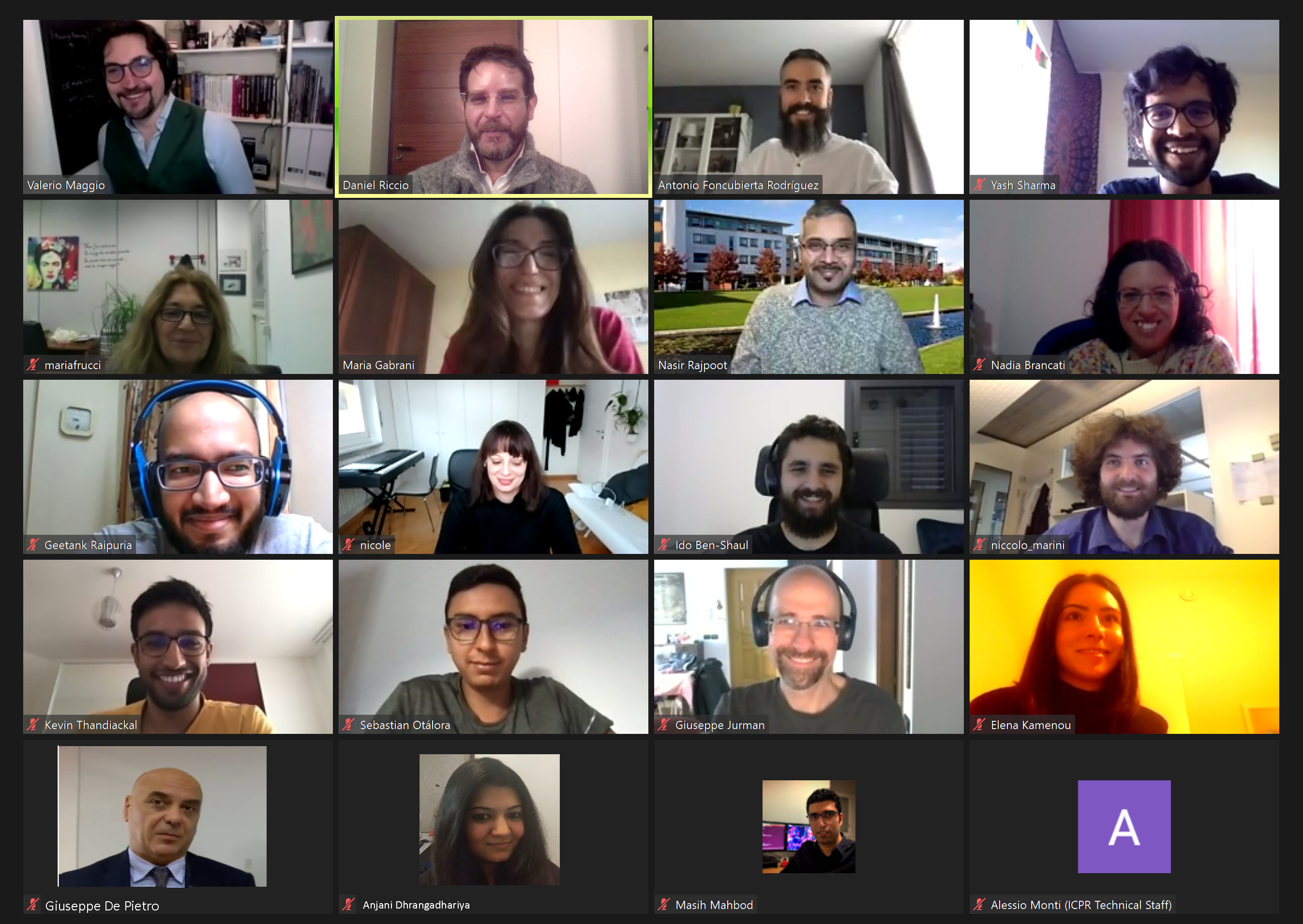
|
International Workshop on Artificial Intelligence for Digital Pathology (AIDP 2021) |
January 10, 2021 12:00 - 16:00 |
||
|
Program |
|||
|
Time line |
Talk |
Authors |
|
|
12:00 - 12:15 |
Opening |
Organizers |
|
|
12:15 - 13:15 |
Invited Talk |
Nasir Rajpoot, University of Warwick, UK. |
|
|
13:15 - 13:35 |
Noise-Robust Training of Segmentation model using Knowledge Distillation
|
Geetank Raipuria, Saikiran Bonthu, and Nitin Singhal |
|
|
13:40 - 14:00 |
Semi-supervised learning with a teacher-student paradigm for histopathology classification: a resource to face data heterogeneity and lack of local annotations |
Niccolo Marini, Sebastian Otalora, Henning Muller, and Manfredo Atzori |
|
|
14:05 - 14:25 |
Self-Attentive Adversarial Stain Normalization |
Aman Shrivastava, William Adorno, Yash Sharma, Lubaina Ehsan, S. Asad Ali, Sean R. Moore, Beatrice Amadi, Paul Kelly, Sana Syed, and Donald E. Brown |
|
|
14:30 - 14:50 |
Certainty Pooling for Multiple Instance Learning
|
Jacob Gildenblat, Ido Ben-Shaul, Zvi Lapp, and Eldad Klaiman
|
|
|
14:55 - 15:15 |
Classification of noisy free-text prostate cancer pathology reports using natural language processing
|
Anjani Dhrangadhariya, Sebastian Otalora, Manfredo Atzori, and Henning Muller
|
|
|
15:20 - 15:40 |
AI slipping on tiles: data leakage in digital pathology
|
Nicole Bussola, Alessia Marcolini, Valerio Maggio, Giuseppe Jurman, and Cesare Furlanello
|
|
|
15:40 - 16:00 |
Discussion and closing |
Organizers |
|
Materials
|
Presentations |
||
|
Authors |
Title |
Link |
|
|
||
|
Nasir Rajpoot, University of Warwick, UK. |
Invited Talk |
|
|
Geetank Raipuria, Saikiran Bonthu, and Nitin Singhal |
Noise-Robust Training of Segmentation model using Knowledge Distillation
|
|
|
Niccolò Marini, Sebastian Otàlora, Henning Müller, and Manfredo Atzori |
Semi-supervised learning with a teacher-student paradigm for histopathology classification: a resource to face data heterogeneity and lack of local annotations |
|
|
Aman Shrivastava, William Adorno, Yash Sharma, Lubaina Ehsan, S. Asad Ali, Sean R. Moore, Beatrice Amadi, Paul Kelly, Sana Syed, and Donald E. Brown |
Self-Attentive Adversarial Stain Normalization |
|
|
Jacob Gildenblat, Ido Ben-Shaul, Zvi Lapp, and Eldad Klaiman |
Certainty Pooling for Multiple Instance Learning |
|
|
Anjani Dhrangadhariya, Sebastian Otálora, Manfredo Atzori, and Henning Müller
|
Classification of noisy free-text prostate cancer pathology reports using natural language processing
|
|
|
Nicole Bussola, Alessia Marcolini, Valerio Maggio, Giuseppe Jurman, and Cesare Furlanello |
AI slipping on tiles: data leakage in digital pathology |
|
